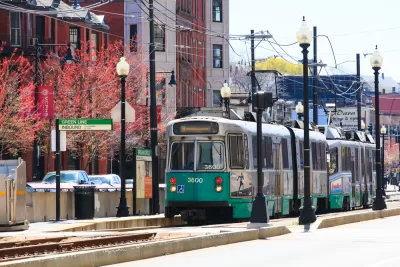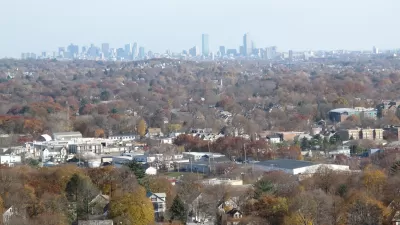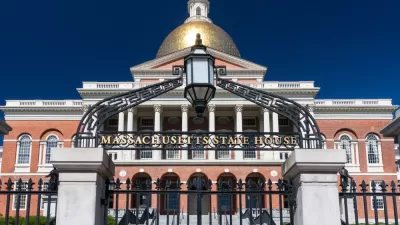More details on the state of Massachusetts' game changing "Housing Choice" program are now available.

The Metropolitan Area Planning Council (MAPC) in December 2021 announced new draft guidelines for zoning changes intended to spur multi-family development near transit routes, as mandated by a state law adopted earlier in 2021.
According to an MAPC statement published on Wednesday, the state required zoning changes affects MBTA communities, defined as cities or towns with MBTA service. In all, 175 such communities are subject to the law.
Enacted as part of the economic development bill in January 2021, new Section 3A of M.G.L. c. 40A (the Zoning Act) requires that an MBTA community shall have at least one zoning district of reasonable size in which multi-family housing is permitted as of right and meets other criteria set forth in the statute.
The criteria for multi-family housing in the required zoning districts, as defined in the draft guidelines, are defined as follows:
- Minimum gross density of 15 units per acre
- Not more than ½ miles from a commuter rail station, subway station, ferry terminal or bus station, if applicable.
- No age restrictions
- Suitable for families with children.
"The new requirement is more than just housing policy. With strong and feasible guidance, Section 3A, a new section of MGL c. 40A – the Zoning Act, could deliver transformational transportation, equity, and climate benefits for our region," according to the statement.
The required zoning changes are included in the "Housing Choice" program included in the January 2021 economic development bill. For more background on the Housing Choice program see earlier Planetizen coverage.
FULL STORY: MBTA Communities Multifamily Zoning Requirement

Study: Maui’s Plan to Convert Vacation Rentals to Long-Term Housing Could Cause Nearly $1 Billion Economic Loss
The plan would reduce visitor accommodation by 25,% resulting in 1,900 jobs lost.

North Texas Transit Leaders Tout Benefits of TOD for Growing Region
At a summit focused on transit-oriented development, policymakers discussed how North Texas’ expanded light rail system can serve as a tool for economic growth.

Using Old Oil and Gas Wells for Green Energy Storage
Penn State researchers have found that repurposing abandoned oil and gas wells for geothermal-assisted compressed-air energy storage can boost efficiency, reduce environmental risks, and support clean energy and job transitions.

Private Donations Propel Early Restoration of Palisades Playground
Los Angeles has secured over $1.3 million in private funding to restore the Pacific Palisades playground months ahead of schedule, creating a modern, accessible space that supports community healing after recent wildfires.

From Blight to Benefit: Early Results From California’s Equitable Cleanup Program
The Equitable Community Revitalization Grant (ECRG) program is reshaping brownfield redevelopment by prioritizing projects in low-income and environmental justice communities, emphasizing equity, transparency, and community benefits.

Planting Relief: Tackling Las Vegas Heat One Tree at a Time
Nevada Plants, a Las Vegas-based nonprofit, is combating the city’s extreme urban heat by giving away trees to residents in underserved neighborhoods, promoting shade, sustainability, and community health.
Urban Design for Planners 1: Software Tools
This six-course series explores essential urban design concepts using open source software and equips planners with the tools they need to participate fully in the urban design process.
Planning for Universal Design
Learn the tools for implementing Universal Design in planning regulations.
Ascent Environmental
Borough of Carlisle
Institute for Housing and Urban Development Studies (IHS)
City of Grandview
Harvard GSD Executive Education
Toledo-Lucas County Plan Commissions
Salt Lake City
NYU Wagner Graduate School of Public Service





























